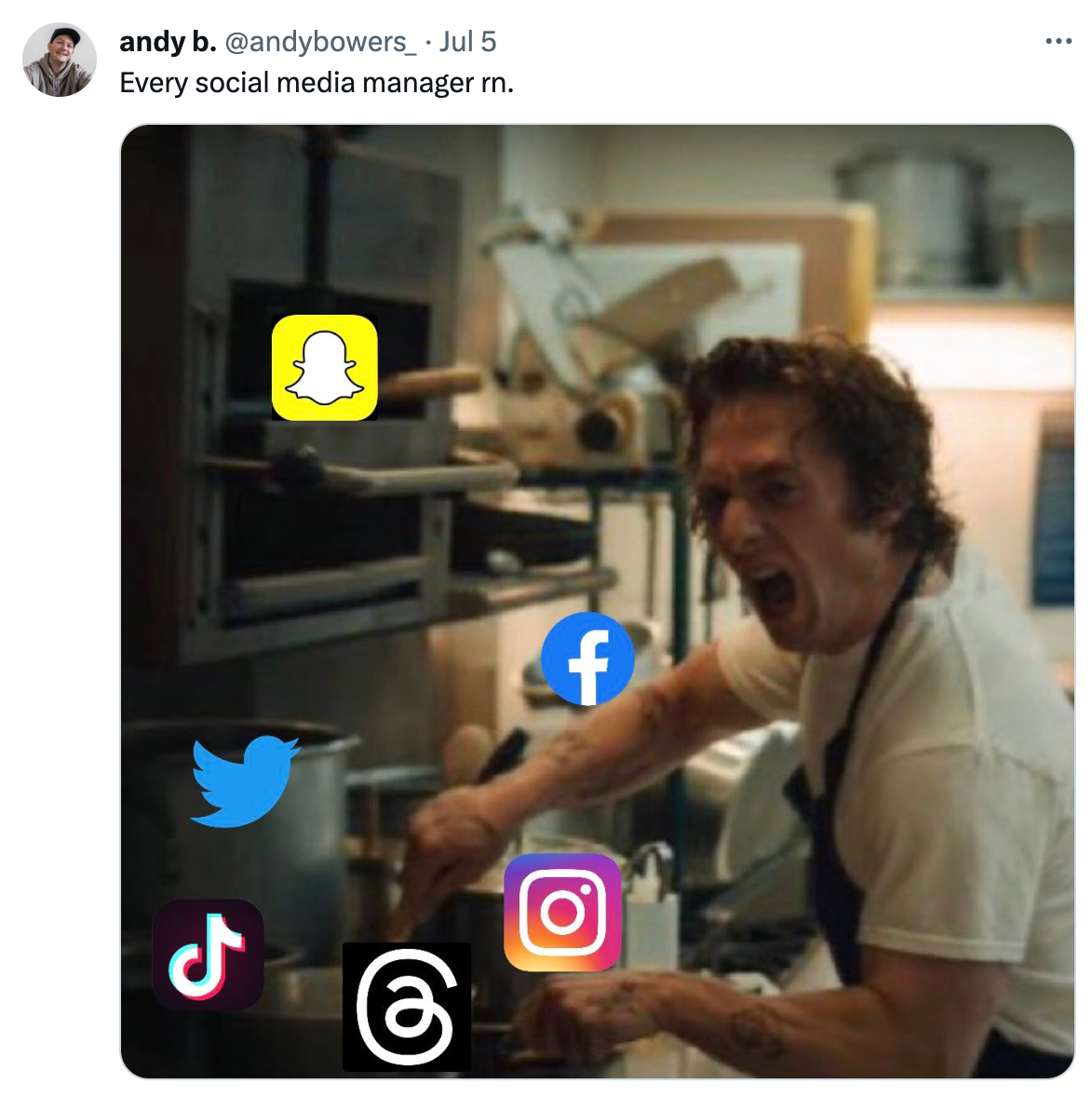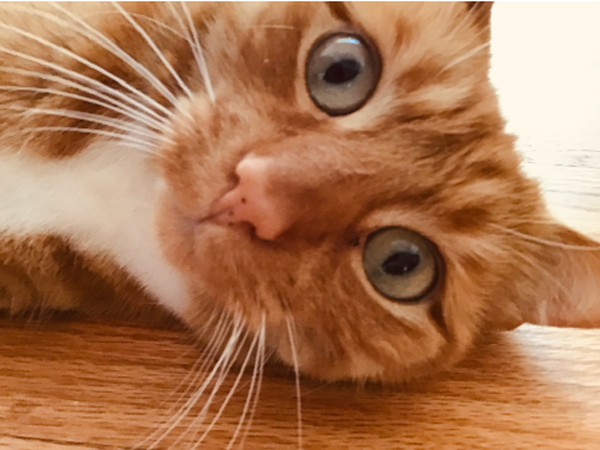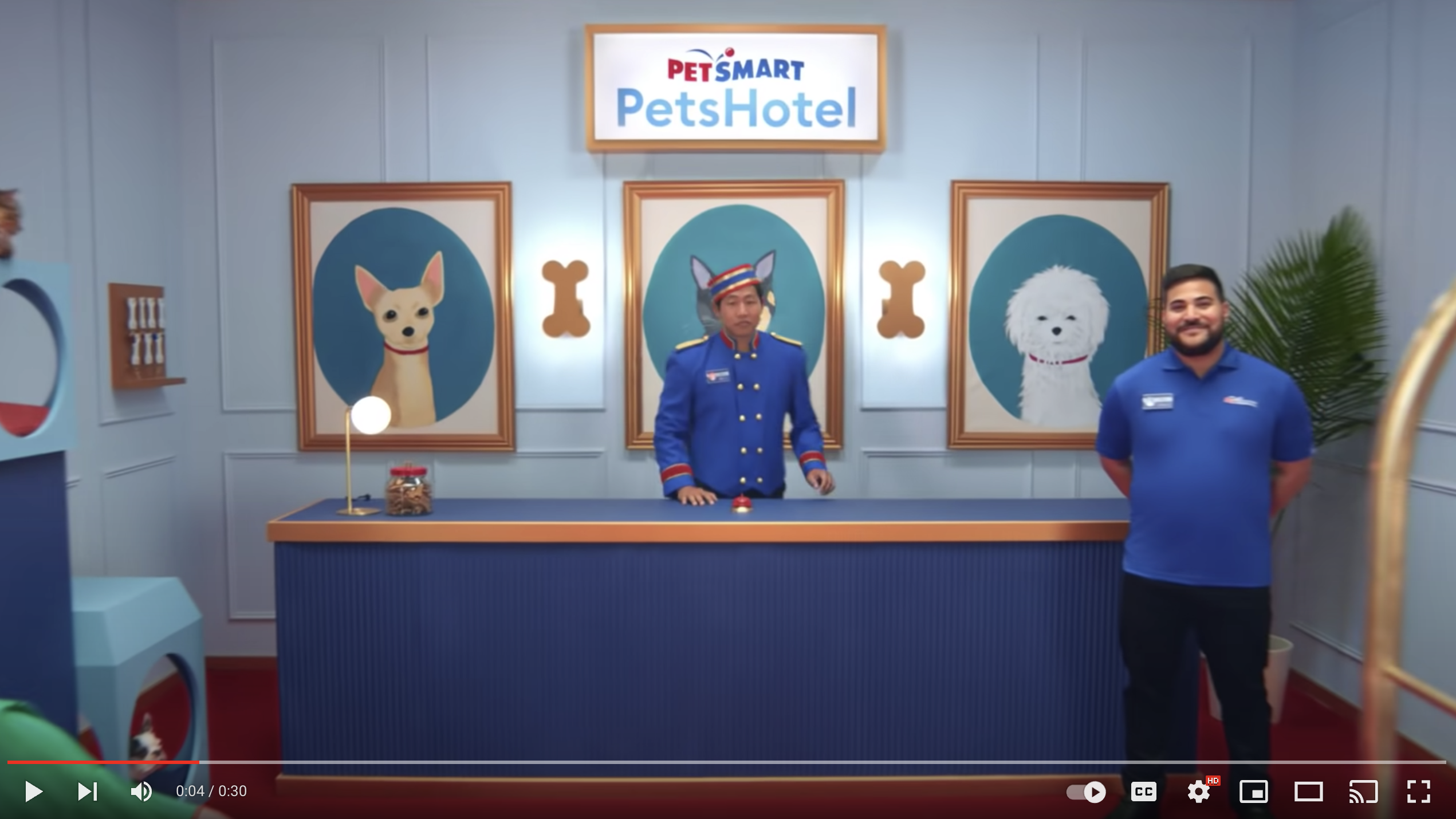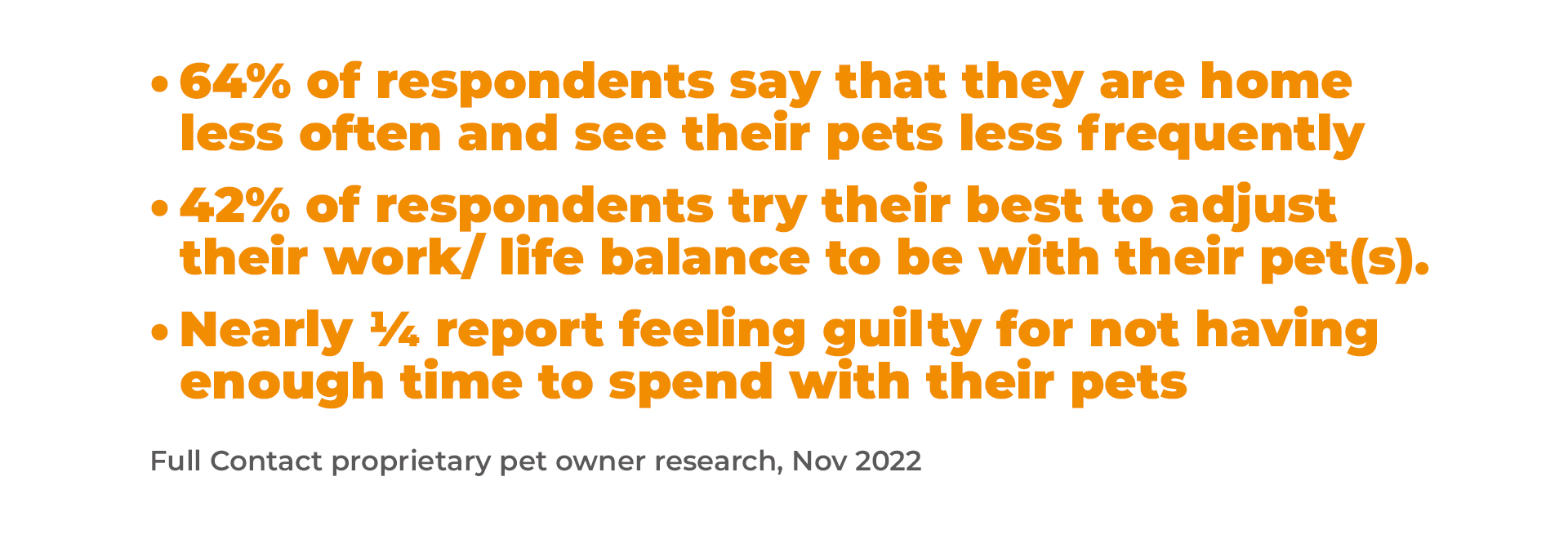Last month, social media managers across the country likely opened their inboxes to find them flooded with meeting invites and subject lines titled something along the lines of “What is our Threads Strategy?”
As the new and currently ad-free social platform by Meta and Instagram has blown up the internet, growing exponentially over the last month, so have the questions about how brands can best use it as a marketing tool.
Here’s what we know so far:
The platform gained over 100 million followers (and counting) in just under a week and there’s no telling what Mark Z. has planned for it next. While the future of the app seems unpredictable, it’s no mystery that the text-forward platform is representative of a Twitter alternative, and most users are treating it as such. These early days of Threads feel intimate and personal, like a big group chat where everyone is posting exactly what’s on their mind. And because Threads is directly connected to your Instagram account, once you join your entire feed becomes populated with content directly from accounts you follow on Instagram or similar, curated content. The beauty of it is, it’s so new, so there’s no right or wrong way to use it.
How brands are using Threads
Without an understanding of an algorithm or any prior metrics to guide them, many brands are currently applying similar tactics to Threads that they would use on Twitter, and even cross-posting the same content. Threads presents an opportunity for brands to create a more personalized connection with their audience. It gives brands the ability to communicate with their followers on a more human level. Brands can share behind-the-scenes moments and exclusive content, and easily communicate directly with their followers. This level of intimacy and exclusivity can help foster a stronger sense of community and brand loyalty.
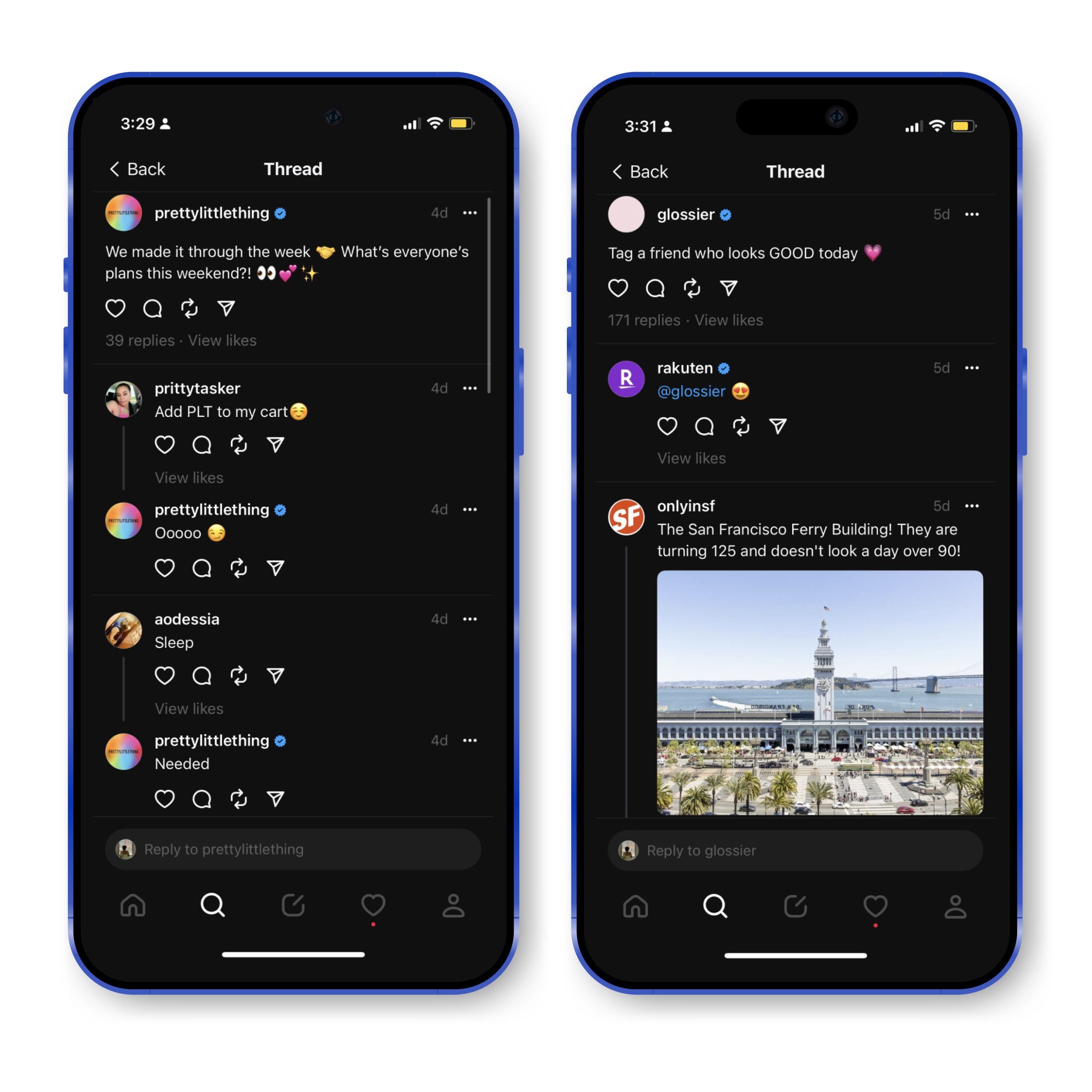
Follower growth seems to be the main focus of these early days of Threads. With the option for users to auto-follow their Instagram following list on Threads, brands that have established a large following on Instagram may have an advantage in retaining their audience on this new platform. Some brands are even going a step further by offering freebies and incentives to their followers in order to gain more traction on the platform.
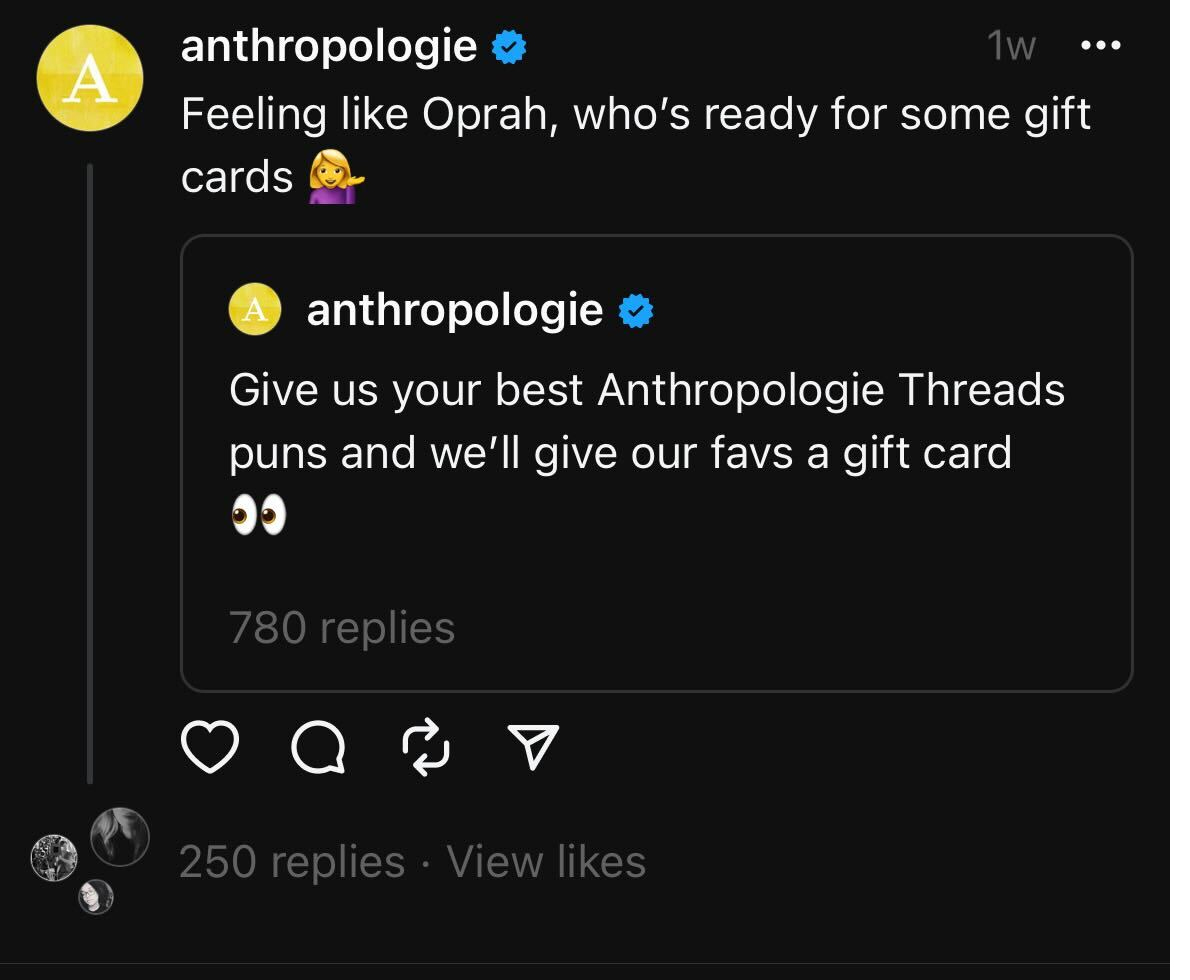 If your brand is ready to try out Threads, here are some tips to get started:
If your brand is ready to try out Threads, here are some tips to get started:
1. Solidify your brand’s Instagram presence
Right now, there’s a direct thread from Instagram to Threads (no pun intended), almost as if Threads is an extension of Instagram. So if your Instagram presence isn’t a huge priority for your brand, it’s time to make it one. First, you want to ensure you’re maintaining brand consistency in your Instagram profile details. That way, setting up your Instagram Threads will be easier because your profile information and settings will carry over.
Additionally, your Instagram followers can be notified to follow you on Threads. The stronger your Instagram presence, the more successful you’ll have in your Threads launch. Not only that, but you can reshare your Threads to your Instagram Story or posts to encourage your current followers to find you on the new platform.
2. Take a look around
Download the app and spend some time browsing to get a feel for things. Check out what your competitors are up to, and how other brands in similar or adjacent industries are using the app. What kind of content are they posting and which posts are getting the most likes, replies, or reposts? Look to them for guidance but also think about how you can put your own individual spin on it.
This is definitely the time to observe and absorb, but don’t be a lurker forever. Even if you don’t have thousands of followers yet, someone will see your posts eventually, so try out a few different types of posts to get your voice out there.
3. Set Goals
While the recipe for success on Threads isn’t black and white, you can still establish goals within your team that give you some direction and framework to track against. Take this time to decide what you want to get out of Threads: is it brand awareness? More engagement? An increased following? And what metrics do you want those goals to be defined by? Let these metrics guide you through your approach, but also be open to trying new things and strategizing as you go, and as the platform grows.
4. Start interacting
As mentioned before, Threads’ main feed is heavily curated and highly intuitive for each user, so now is the time to join conversations with relevant content and establish your brand within a community. This will help determine what types of content you’ll see as a user and likely promote your content to others in the same community or circle. Also, there’s a high chance your Instagram followers will cross over to follow you on Threads too, so this is your chance to start connecting with them right away with text forward-posts to get conversations started. This will be even more effective if you maintain a lighthearted, conversational tone and try to fit humor in when you can (memes always win)
5. Don’t overthink it!
We’re all learning this as we go, so there’s no right or wrong way to approach Threads. Don’t put too much pressure on it and try to have fun. If Instagram and Facebook are your core curriculum, right now Threads is recess.
Overall, Threads presents an exciting new opportunity for brands to further engage with their audience in a more personalized and intimate way. As with any new platform, it’s important to approach it with an open mind and experiment with different strategies to see what works best for your brand. Good luck!


